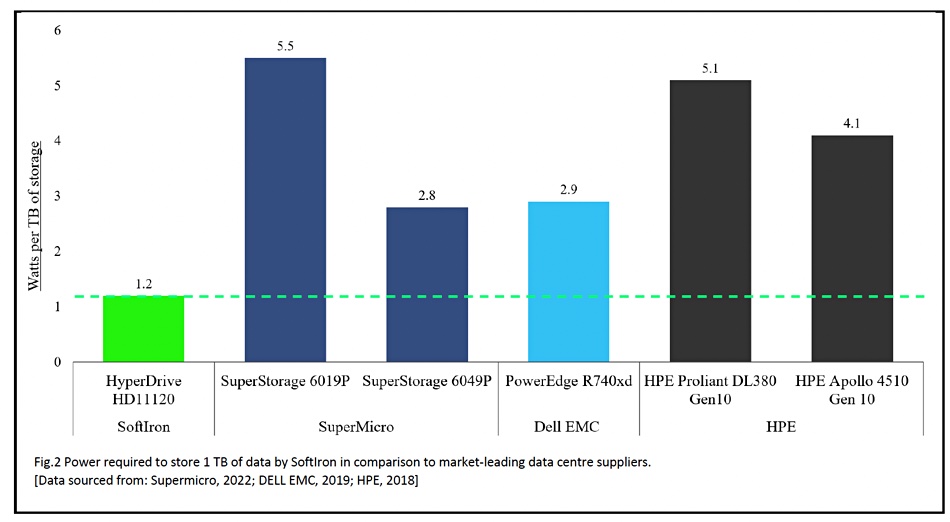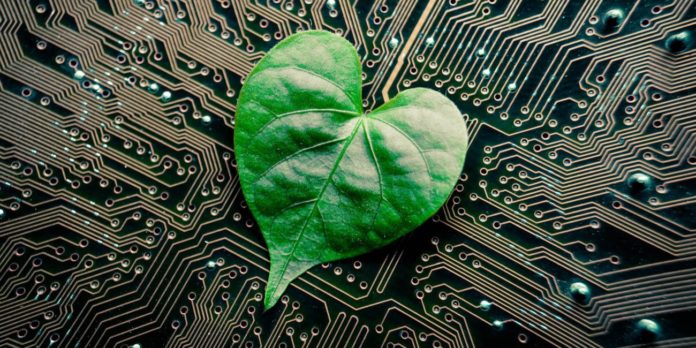A private-equity group that has put money into SoftIron claims the integrated hardware-software array manufacturer has the lowest carbon footprint of storage servers when compared to Dell, HPE, and Supermicro.
Environmental, Social and Governance (ESG) reporting is becoming widespread in North America and Europe. IT organisations are looking to their suppliers to help them lower their carbon footprint.
UK-based investing group Earth Capital focuses on the development and deployment of sustainable technology, and is SoftIron’s sole VC backer. It has issued a SoftIron Carbon Footprint Report 2022 as part of a Net Zero Asset Managers Initiative committing it to support the goal of net zero greenhouse gas emissions by 2050 or sooner. Earth Capital has conducted net-zero assessments on assets under its management, including SoftIron storage systems.
Earth Capital said it found “SoftIron’s product has a greatly reduced carbon footprint mainly on account of the comparably low energy usage during operation.”
It claimed the power required to store 1TB of data with SoftIron’s HyperDrive system was between 2 and 4.6 times less than that needed for similar Dell, HPE, and Supermicro systems.
“The SoftIron appliances produce up to 80 percent less heat than the standard, thereby radically reducing emissions pertaining to cooling of data centers,” the report says.
The researchers calculated the power needed to store 1TB of data as a proxy for a device’s carbon footprint. They took into account the product’s lifetime, operating power consumption, and assembly and use locations. Their assessment used publicly available data to compare the power required to store 1 TB of data using a SoftIron appliance to the power required using alternative Ceph reference architectures.
The report states: “The full life cycle emissions of a single SoftIron node equates to 2,898 ± 290 kg CO2e. Of these emissions, ~77 percent (2227 ± 223 kg CO2e) pertain to the use of the product while ~23 percent (671± 40 kg CO2e) pertain to the collective contributions of raw materials, manufacturing, transportation, and installation (fig.1). These findings highlight that electricity during product operation is a significant carbon source for SoftIron. However, carbon emission pertaining to energy usage in industry standard servers is ~11,135 kg CO2e (i.e. up to 5 times larger than that of SoftIron.)
A chart shows the results of Earth Capital’s comparisons with Dell PowerEdge R740xd systems, HPE ProLiant DL380 and Apollo 4510 products, and Supermicro 6019P and 6049P SuperStorage systems with SoftIron’s HyperDrive HD11120:

Supermicro’s 6049P was second best with 2.8W/TB needed to store 1TB of data compared to SoftIron’s 1.2W/TB. Dell was third best with 2.9W/TB while HPE’s Apollo was rated at 4.1W/TB. The ProLiant needed 5.1W/TB, while Supermicro’s 6019P was the worst system at 5.5W/TB.
The energy consumption comparisons do not account for additional carbon savings stemming from reduced heat generation.
Dell, HPE and Supermicro have been contacted for comment but not replied at publication time. Subsequently Supermicro stated: “it will pass on responding this time around. Supermicro has a continued interest in the carbon footprint of its own and customers operations, and will publish a green data centre report this summer.”
The Earth Capital report notes: “Many market-leading data centre suppliers acquire commoditised, off-the-shelf hardware which use the latest iteration of central processing units (CPUs). Research indicates that each iteration of CPU requires more power than its predecessor (fig.3). Therefore, the industry standard data centre appliances are in fact becoming less energy-efficient, thereby creating more financial and environmental costs for data centres.”
Earth Capital’s fig 3 chart looks like this:

The report concludes: “Many current customers are seeing SoftIron’s energy efficient approach as a steppingstone towards their sustainability goals. For example, a recent customer (THG) has adopted SoftIron’s solutions as part of a key corporate goal to maintain CarbonNeutral certification as they grow thier footprint of data centres.”
There is no industry-standard way to measure a storage (or other) system’s carbon footprint. The SNIA, with its existing Green Storage Technical Workgroup and Green Storage Initiative, could perhaps have a look at developing one.








